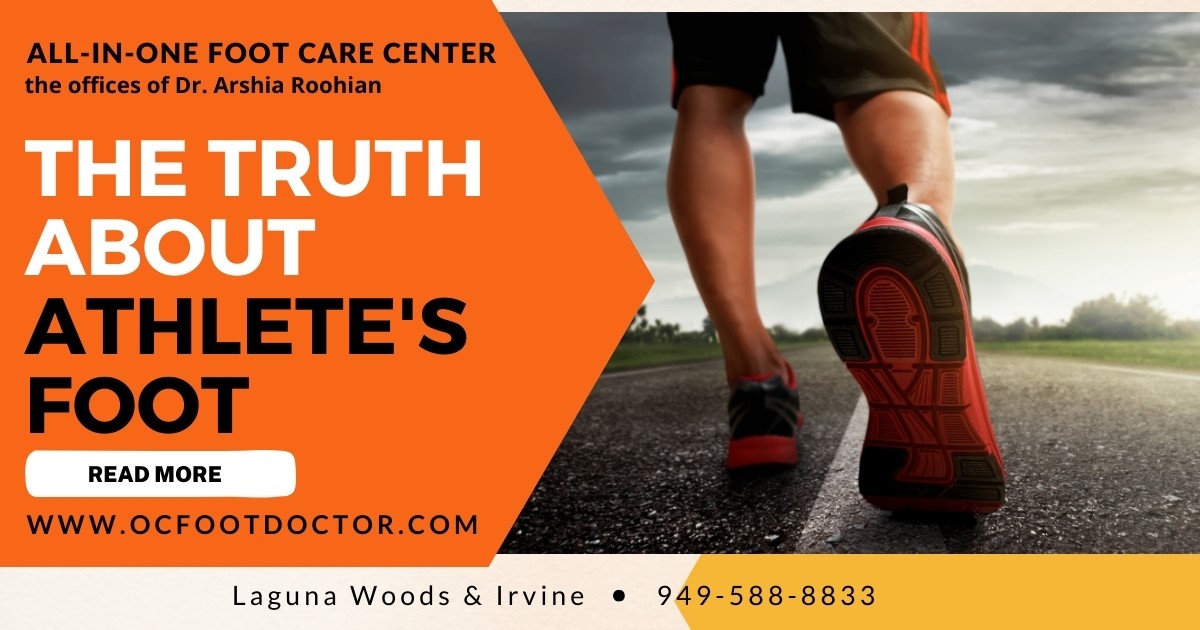The Truth About Athlete's Foot

Greetings, active souls! If you've ever experienced the itching, burning, and general discomfort that comes with athlete's foot, you're not alone. This common fungal infection can affect anyone, not just athletes. In this blog, we'll unravel the mysteries of athlete's foot, exploring its causes, symptoms, and most importantly, how to kick it to the curb for good.
_2.jpg)
What is Athlete's Foot?
Athlete's foot, or tinea pedis, is a contagious fungal infection that primarily affects the feet. Fungi love warm, moist environments, making sweaty socks and tight shoes their ideal breeding ground. The infection often begins between the toes and can spread to the soles and sides of the feet.
_2.jpg)
Causes and Risk Factors:
Warm and Damp Conditions:
Fungi thrive in warm, damp places. Sweaty feet, especially in tight shoes, create the perfect environment for them to flourish.
Public Places:
Communal areas like gym showers, swimming pools, and locker rooms are common breeding grounds for the fungus. Walking barefoot in these areas can increase your risk.
Infected Objects:
Sharing towels, socks, or shoes with someone who has athlete's foot can lead to the spread of the infection.
Common Symptoms:
Itching and Burning Sensation:
Persistent itching and burning between the toes are often early signs of athlete's foot.
Cracked, Peeling Skin:
The skin may become dry, cracked, and peel, particularly on the soles and sides of the feet.
Redness and Inflammation:
The affected areas may appear red and inflamed, and blisters can sometimes form.
_2.jpg)
Myth-Busting:
Myth #1: Only Athletes Get It.
Athlete's foot can affect anyone, not just athletes. It's more about the conditions your feet are exposed to than your level of athletic activity.
Myth #2: It's Always Visible.
Athlete's foot doesn't always present with obvious signs. Some people may have it without visible symptoms, but they can still spread the infection.
Myth #3: Only Between the Toes.
While it often starts between the toes, athlete's foot can spread to other areas of the foot, including the soles and sides.
Prevention Strategies:
Keep Feet Dry:
Dry your feet thoroughly, especially between the toes, after bathing or swimming.
Choose Breathable Footwear:
Opt for shoes made of breathable materials, and change socks if they become damp.
Avoid Walking Barefoot in Public Areas:
Wear flip-flops or sandals in communal areas where the fungus may be present.
Regularly Change Shoes and Socks:
Rotate your shoes to allow them to air out, and change socks throughout the day if your feet tend to sweat.
.jpg)
Treatment Options:
Over-the-Counter Antifungal Medications:
Topical antifungal creams, powders, or sprays are often effective in treating mild cases.
Prescription Medications:
For more severe cases, a healthcare professional may prescribe oral antifungal medications.
Good Foot Hygiene:
Practicing good foot hygiene can aid in both treatment and prevention. Keep your feet clean and dry, and avoid sharing personal items like towels and shoes.
If you suspect you have athlete's foot or are experiencing persistent symptoms, it's essential to consult with a healthcare professional for an accurate diagnosis and tailored treatment plan. Don't let athlete's foot keep you on the sidelines – tackle it head-on and get back to enjoying the activities you love!


